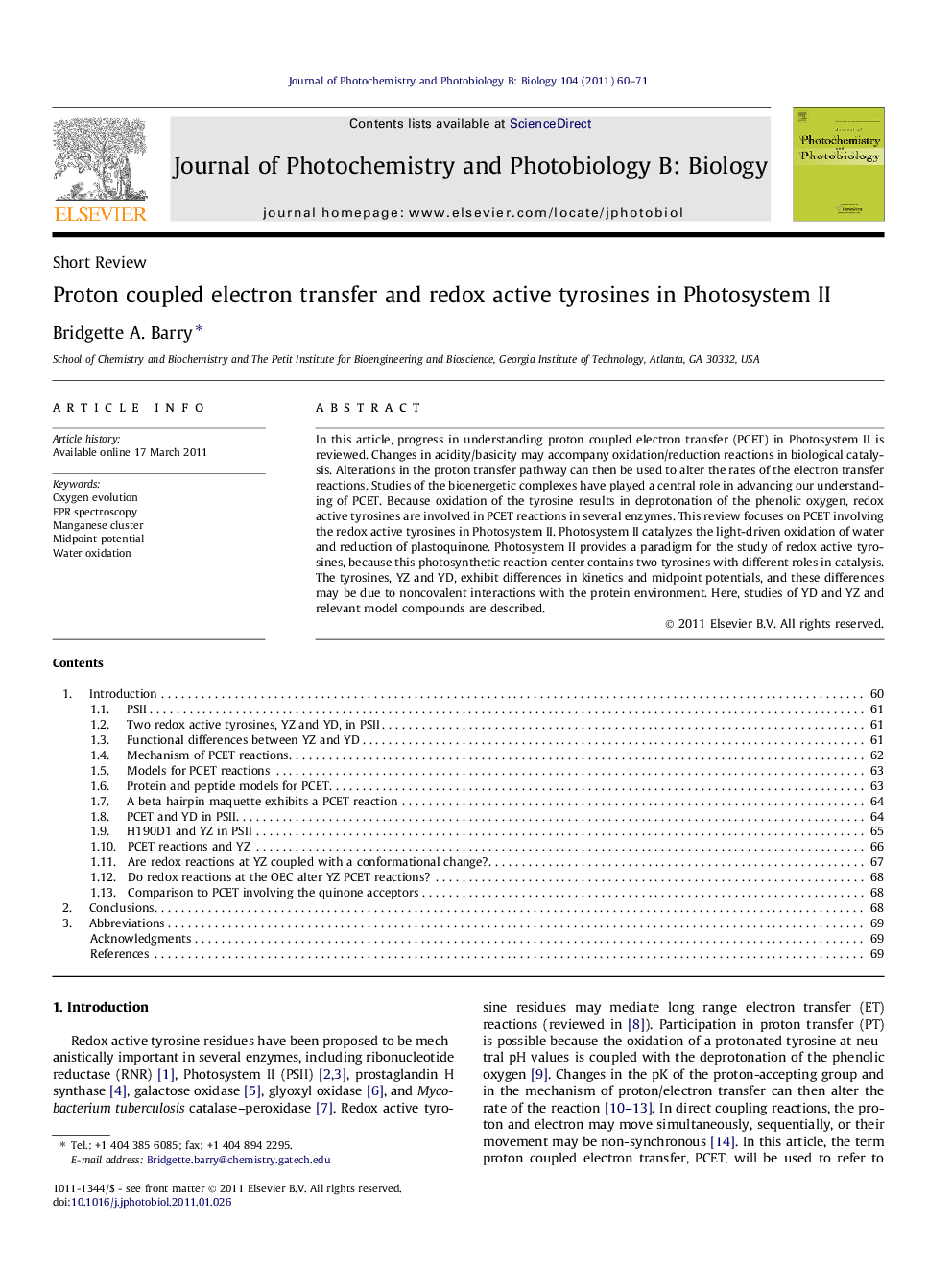| Article ID | Journal | Published Year | Pages | File Type |
|---|---|---|---|---|
| 29612 | Journal of Photochemistry and Photobiology B: Biology | 2011 | 12 Pages |
In this article, progress in understanding proton coupled electron transfer (PCET) in Photosystem II is reviewed. Changes in acidity/basicity may accompany oxidation/reduction reactions in biological catalysis. Alterations in the proton transfer pathway can then be used to alter the rates of the electron transfer reactions. Studies of the bioenergetic complexes have played a central role in advancing our understanding of PCET. Because oxidation of the tyrosine results in deprotonation of the phenolic oxygen, redox active tyrosines are involved in PCET reactions in several enzymes. This review focuses on PCET involving the redox active tyrosines in Photosystem II. Photosystem II catalyzes the light-driven oxidation of water and reduction of plastoquinone. Photosystem II provides a paradigm for the study of redox active tyrosines, because this photosynthetic reaction center contains two tyrosines with different roles in catalysis. The tyrosines, YZ and YD, exhibit differences in kinetics and midpoint potentials, and these differences may be due to noncovalent interactions with the protein environment. Here, studies of YD and YZ and relevant model compounds are described.
► Proton-coupled electron transfer(PCET) occurs in photosystem II (PSII). ► PSII catalyzes the light driven oxidation of water and reduction of plastoquinone. ► PSII contains two tyrosines, YD and YZ, which are involved in PCET. ► YD and YZ have different catalytic roles in PSII. ► Studies of PCET, YD, YZ, and relevant model compounds are reviewed.
